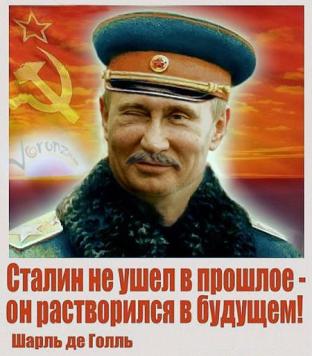 There is a great deal of nonsense about “a new 1937” brewing in Russia (frankly, paralleling Putin with Stalin is both foolish and also profoundly demeaning to the memory of the millions of victims of the latter’s murder-machine). Nonetheless, bureaucratic engines of repression in authoritarian regimes do have some structural and cultural similarities, and thanks to a recent one of the excellent SRB podcast series I came across James Harris’s equally-excellent The Great Fear: Stalin’s Terror of the 1930s (OUP, 2016).
There is a great deal of nonsense about “a new 1937” brewing in Russia (frankly, paralleling Putin with Stalin is both foolish and also profoundly demeaning to the memory of the millions of victims of the latter’s murder-machine). Nonetheless, bureaucratic engines of repression in authoritarian regimes do have some structural and cultural similarities, and thanks to a recent one of the excellent SRB podcast series I came across James Harris’s equally-excellent The Great Fear: Stalin’s Terror of the 1930s (OUP, 2016).
A few aspects of Harris’s explanation for the bloodbath are depressingly relevant today:
The Fear. Stalin and his cohorts genuinely felt at risk and assailed, knowing that the Japanese and the Germans wanted to take their land and resources, believing the British, French and the Americans wanted to see them at war, assuming the fifth columnists at home were powerful, networked and bloodthirsty. This was not just a mobilizing propaganda theme, though it was that as well, it was a strongly held belief that inclined the regime towards more murderous and maximalist policies than otherwise might have been.
The Threat Lobby. Felix Dzerzhinsky, founder of the Soviet political police, and his successors not only tended to assume the intertwined domestic and external threats to be more serious than they were, they also had a clear bureaucratic-factional interest in talking them up. At a time when the Ministry of Foreign Affairs was up in arms about the impact of the Chekists’ activities, and there was talk of tighter subordination to the organs of justice, what better time to stoke the fear, to present it as a choice between security or legal and political niceties?
The Kremlin Echo Chamber. Harris treads a fine line between the top-down and bottom-up (or strong state/weak state) explanations for the Great Purges. I’m not entirely convinced that squaring the circle by saying it was a strong state that thought itself weak quite works, although there is an undoubted elegance to the suggestion, but it is clear that most of the repression was not directed specifically from the top. Stalin was the impresario, but the performers were largely ad libbing. In this context, local agencies were often driven by the hope of correcting interpreting and predicting the Kremlin’s wishes and also the imperative to tell Moscow what it wanted to hear. Increasingly, the scope for loyal dissent shrank and shrank.
There are clear parallels today. Putin is not about to start a campaign of mass murder or try to modernise his economy on the back of slave labour, of course. But we need to recognise, even if just to help us understand and predict this regime better, the extent to which it genuinely believes itself actively threatened, not just by the impersonal forces of economics and demographics, but by Western machination. It is encouraged to do this by a security apparatus that has learned to play to the more paranoid and defensive instincts of the regime and a bureaucratic culture that seeks to identify what an often gnomic Kremlin truly wants. These were dangerous political pathologies in 1937, and they are again so today.
![]()

![]()